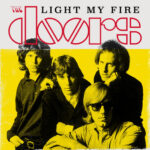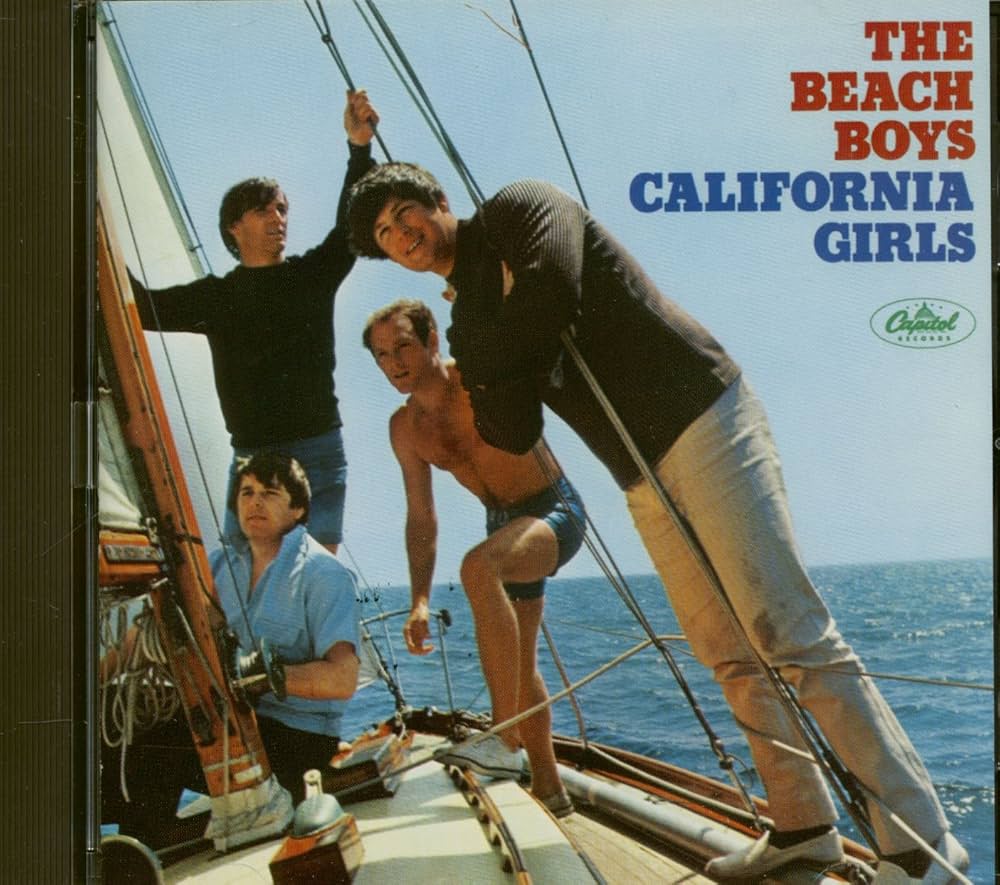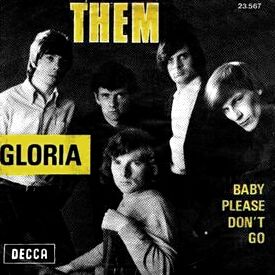 When Light My Fire by The Doors burst into the cultural ether in 1967, it was more than just another rock single competing for airtime—it was a revelation, an expansive, swirling sonic journey that managed to simultaneously seduce, shock, and inspire. The song captured something ineffable about the late sixties: the collision of rebellion and beauty, the promise of liberation and danger, the search for transcendence through sound. It didn’t just light a fire; it became the fire that spread across radio waves, college dorm rooms, and packed concert halls, forever altering the trajectory of rock music and embedding itself into the DNA of psychedelic sound. More than five decades later, its hypnotic organ intro, poetic imagery, and transcendent solos remain as magnetic as they were in the Summer of Love. To appreciate the brilliance of Light My Fire is to immerse oneself in the world of The Doors—a band as enigmatic as they were groundbreaking—and to understand how a seven-minute epic could encapsulate both the mysticism and madness of its time.
When Light My Fire by The Doors burst into the cultural ether in 1967, it was more than just another rock single competing for airtime—it was a revelation, an expansive, swirling sonic journey that managed to simultaneously seduce, shock, and inspire. The song captured something ineffable about the late sixties: the collision of rebellion and beauty, the promise of liberation and danger, the search for transcendence through sound. It didn’t just light a fire; it became the fire that spread across radio waves, college dorm rooms, and packed concert halls, forever altering the trajectory of rock music and embedding itself into the DNA of psychedelic sound. More than five decades later, its hypnotic organ intro, poetic imagery, and transcendent solos remain as magnetic as they were in the Summer of Love. To appreciate the brilliance of Light My Fire is to immerse oneself in the world of The Doors—a band as enigmatic as they were groundbreaking—and to understand how a seven-minute epic could encapsulate both the mysticism and madness of its time.
The Doors were not like the other California bands of the era. While the Beach Boys surfed waves of harmony and Jefferson Airplane leaned fully into the acid-soaked dreamscapes of San Francisco, The Doors arrived with something darker, stranger, more theatrical. Jim Morrison was not merely a singer; he was a shamanic figure, a poet with a penchant for Baudelaire and Blake, who conjured images of fire, desire, death, and transcendence with a voice that was equal parts croon, growl, and sermon. Ray Manzarek’s organ didn’t just accompany the vocals; it became the otherworldly backbone of their sound, weaving gothic cathedral tones into the realm of psychedelic rock. Robby Krieger’s guitar brought Spanish flamenco flavor and blues grit, while John Densmore’s jazz-informed drumming gave the band a rhythmic fluidity that made even their heaviest moments swing. Within this alchemy, Light My Fire emerged as their defining anthem, a song that didn’t just climb the charts but smashed barriers of what pop music could be.
Remarkably, the song didn’t even originate with Morrison, the band’s most obvious source of lyrical mysticism. Instead, guitarist Robby Krieger wrote the bulk of it after Morrison encouraged each band member to try their hand at songwriting. Krieger, inspired by themes of fire in classic rock and folk tunes and drawing on his admiration for Coltrane’s My Favorite Things, came up with the core idea. Morrison, of course, added his own lyrical flair, and Manzarek’s keyboard introduction gave the piece its iconic opening—a swirling, Baroque-flavored riff that felt like both a summons and a warning. When the band stitched it all together, they had something that defied easy categorization. It was pop, but it was jazz. It was rock, but it was art music. It was sensual and cerebral, accessible yet mystically profound.
The Doors’ debut self-titled album, released in January 1967, was already filled with arresting material, from the blues swagger of “Back Door Man” to the hypnotic descent of “The End.” But it was Light My Fire that quickly stood out. When Elektra Records released it as a single, they insisted on trimming the song’s sprawling seven minutes into a radio-friendly three-minute version, slicing away much of the improvisational midsection. The band resisted, but eventually relented, recognizing the need to break through mainstream airwaves. The gamble worked: the edited version hit number one on the Billboard Hot 100 in July 1967, where it stayed for three weeks, propelling the band to instant stardom. For many listeners, this was their first taste of The Doors’ intoxicating blend of psychedelia, rock, and poetry. For the band, it was proof that even the strangest, most ambitious ideas could resonate with millions.
Yet, to truly experience Light My Fire, the full album version is essential. The sprawling solos in the middle—Manzarek’s swirling organ lines, Krieger’s lyrical guitar improvisations—transform the track from a pop hit into a near-spiritual experience. These sections, heavily indebted to jazz traditions of exploration, gave the song its hypnotic depth, ensuring that it was not just something to sing along to but something to get lost in. The way the band collectively rode the dynamics, building tension and release, mirrored the very theme of the song: desire as a consuming force, fire as both destructive and illuminating. In its full form, Light My Fire is less a song than a ritual, an incantation set to music.
The song’s lyrics, deceptively simple at first glance, carry Morrison’s poetic fingerprints. “You know that it would be untrue, you know that I would be a liar, if I was to say to you, girl we couldn’t get much higher.” On one level, it’s the straightforward plea of a young man seducing a lover, urging her to embrace passion and abandon. On another, it is a statement about transcendence, about pushing beyond limitations, about igniting something primal and eternal within oneself. Morrison’s delivery makes the difference: he sings it not with casual pop cheer but with an almost desperate urgency, as though the stakes are life and death. The metaphor of fire resonates across cultures as a symbol of both creation and destruction, and Morrison wields it like a torch, inviting listeners to join him in the flames.
The cultural impact of Light My Fire was immediate and lasting. It became an anthem of the psychedelic era, inseparable from images of incense smoke, dimly lit rooms, and the countercultural dream of love as liberation. Its release coincided with the Summer of Love, when America’s youth were rebelling against the Vietnam War, embracing alternative lifestyles, and experimenting with consciousness expansion. The song seemed to embody all of that—its intensity matching the turbulence of the times, its sensuality reflecting the sexual revolution, its improvisation paralleling the spirit of experimentation. Yet it also retained a dark, mysterious edge, reminding listeners that passion and freedom come with risks. This balance between the seductive and the dangerous was The Doors’ hallmark, and Light My Fire was the purest distillation of that ethos.
One of the most infamous moments in the band’s history involved the song’s promotion. In 1967, The Doors were invited to perform Light My Fire on The Ed Sullivan Show. The show’s producers asked Morrison to change the line “girl, we couldn’t get much higher” because they felt it was too suggestive of drug use. Morrison, with his usual mix of defiance and theatrical mischief, promised he would—but then sang the lyric exactly as written during the live broadcast. Sullivan was furious, reportedly telling the band they’d never be invited back. Morrison’s smirk as he delivered the line cemented his image as a rebellious poet unafraid to challenge authority. The controversy only fueled the song’s mystique, making it not just a chart-topper but a cultural lightning rod.
The legacy of Light My Fire extends far beyond its chart success. It has been covered countless times, most notably by José Feliciano in 1968, whose soulful, Latin-infused rendition became a hit in its own right and earned him a Grammy. Feliciano’s version stripped the song down to its core, revealing its melodic strength and adaptability, while The Doors’ version remained the definitive psychedelic firestorm. Over the decades, the song has appeared in films, television shows, and commercials, continuing to ignite new generations of listeners. Its longevity speaks not just to nostalgia but to its timeless power as a piece of music that transcends trends.
What makes Light My Fire endure is the way it embodies both precision and chaos, order and freedom. The structure is tight, the melodies unforgettable, yet the solos stretch into the infinite, reminding us that music is not just about repetition but about discovery. It’s a song you can dance to, sing to, meditate to, or simply surrender to. For many, their first exposure to The Doors comes through this track, and it serves as a gateway into the band’s deeper, darker catalog. For others, it remains the high point, the moment when Morrison and company captured lightning in a bottle—or more accurately, fire in a song.
Even in 2025, Light My Fire feels alive. Put it on, and you are transported not only to 1967 but also into the eternal realm of desire and sound it inhabits. Manzarek’s organ still swirls like smoke in the air, Krieger’s guitar still flickers like flames, Densmore’s drums still pulse like a heartbeat, and Morrison’s voice still beckons like a siren call. It is both a time capsule and a timeless invocation. It reminds us that music at its best doesn’t just entertain; it transforms, it ignites, it burns away the ordinary and leaves us illuminated.
Light My Fire by The Doors is more than a song—it is an experience, a ritual, a spark that set generations ablaze. It remains one of the greatest achievements in rock history, a track that dared to expand the possibilities of popular music and succeeded beyond anyone’s imagination. The fire it lit in 1967 still burns today, as potent and irresistible as ever, a flame that will never be extinguished.


